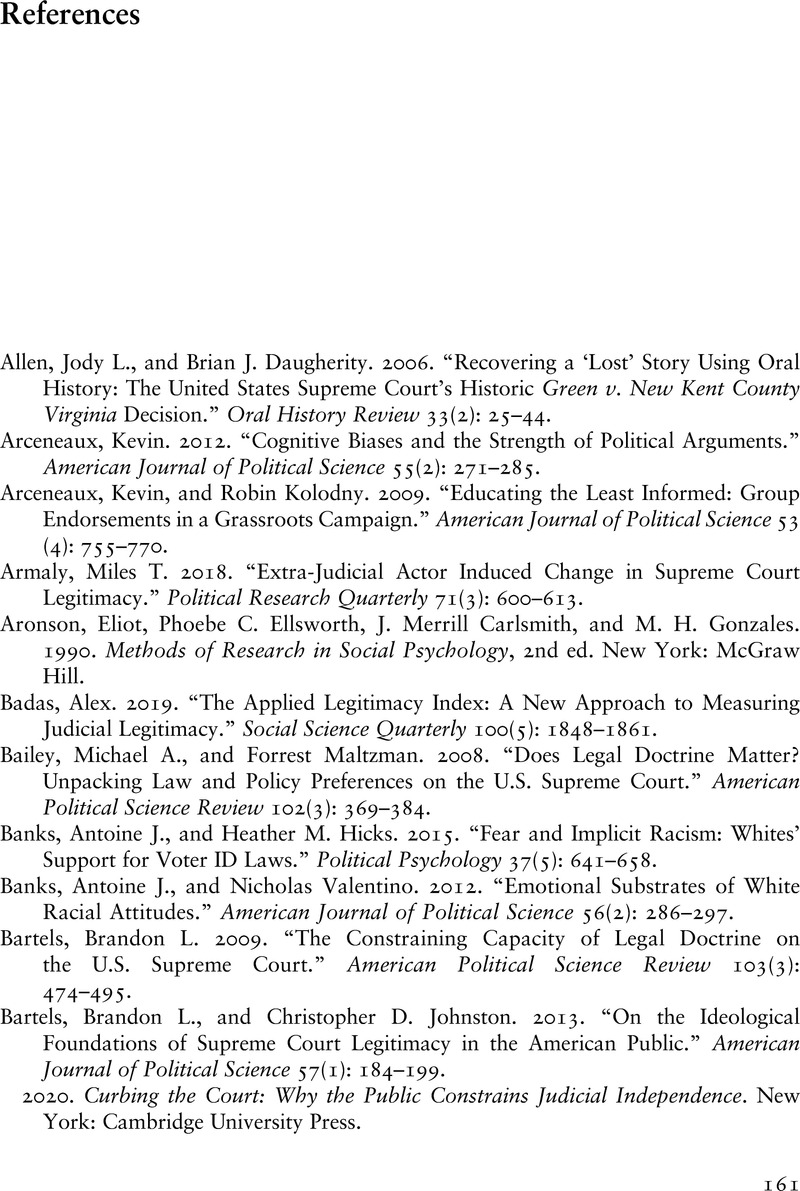Book contents
- The Rights Paradox
- The Rights Paradox
- Copyright page
- Dedication
- Contents
- Figures
- Tables
- Acknowledgments
- Table of Cases
- 1 Legitimacy and Minority Rights
- 2 The Group Antipathy Theory of Supreme Court Legitimacy
- 3 Under Siege
- 4 Opening the Floodgates
- 5 Experimental Tests of the Group Antipathy Model
- 6 How Citizens Use Groups to Evaluate Judicial Preferences
- 7 Group Antipathy and Strategic Behavior on the Supreme Court
- 8 Conclusion
- Appendix
- References
- Index
- References
References
Published online by Cambridge University Press: 22 March 2021
- The Rights Paradox
- The Rights Paradox
- Copyright page
- Dedication
- Contents
- Figures
- Tables
- Acknowledgments
- Table of Cases
- 1 Legitimacy and Minority Rights
- 2 The Group Antipathy Theory of Supreme Court Legitimacy
- 3 Under Siege
- 4 Opening the Floodgates
- 5 Experimental Tests of the Group Antipathy Model
- 6 How Citizens Use Groups to Evaluate Judicial Preferences
- 7 Group Antipathy and Strategic Behavior on the Supreme Court
- 8 Conclusion
- Appendix
- References
- Index
- References
Summary

- Type
- Chapter
- Information
- The Rights ParadoxHow Group Attitudes Shape US Supreme Court Legitimacy, pp. 161 - 172Publisher: Cambridge University PressPrint publication year: 2021



